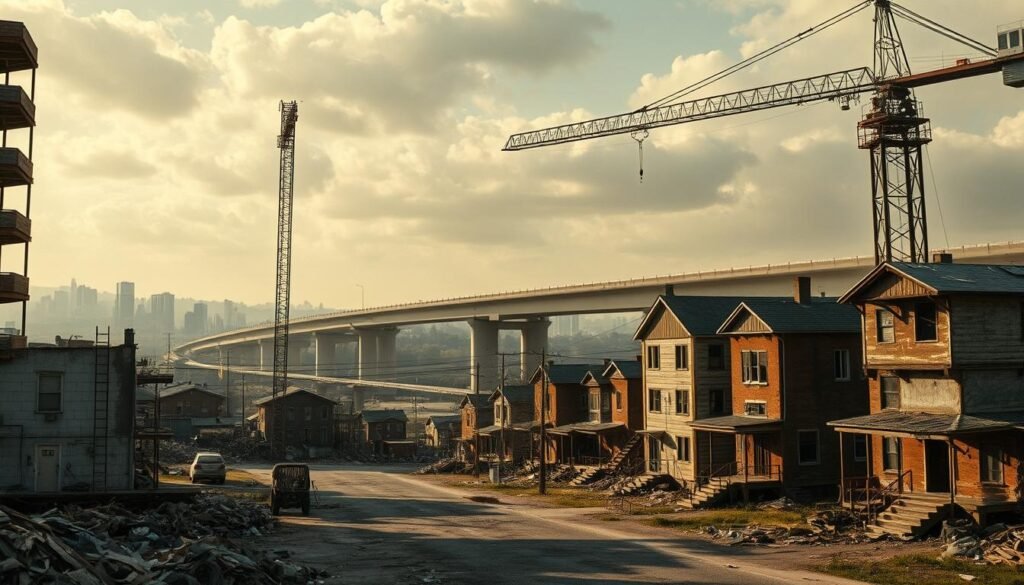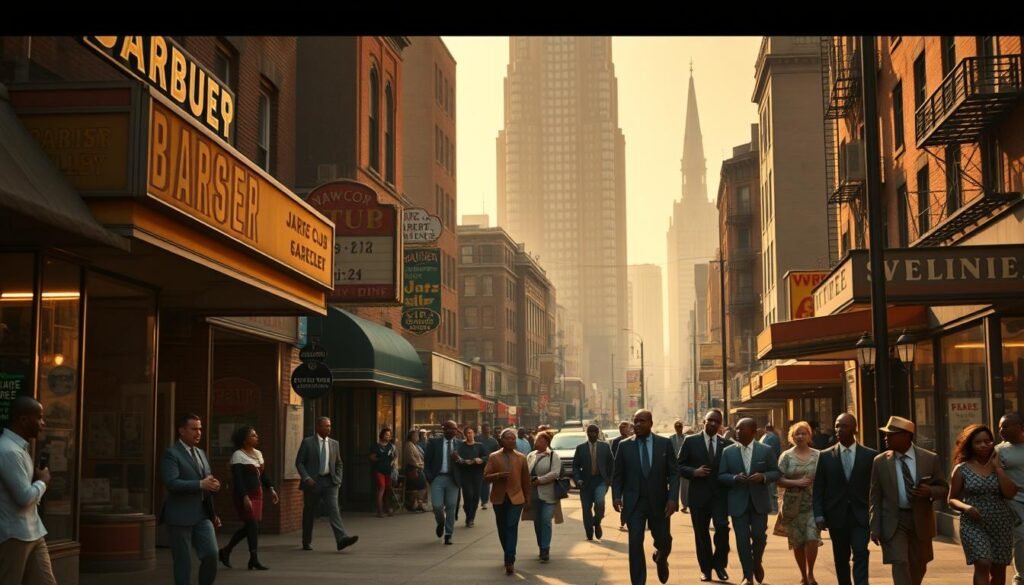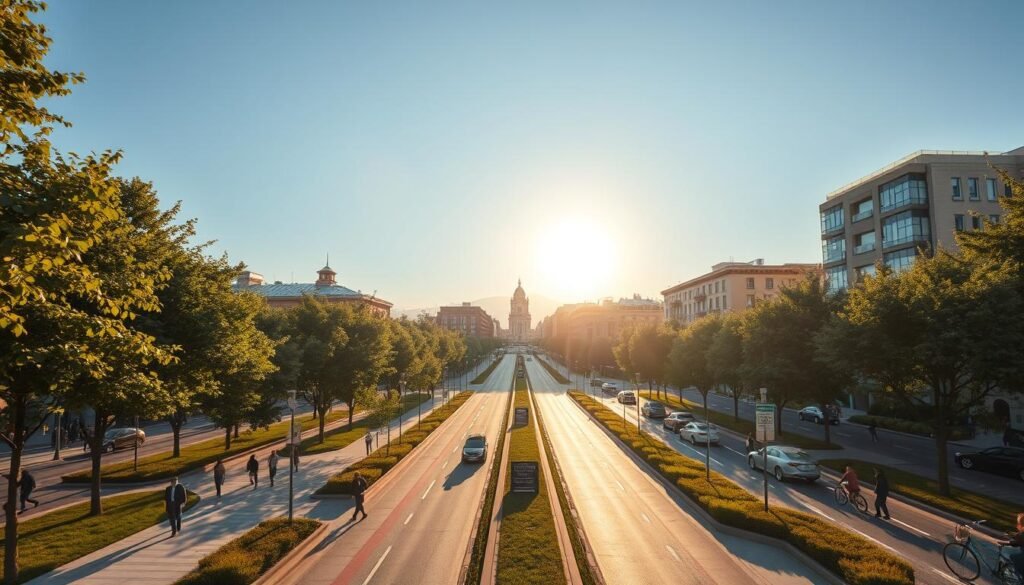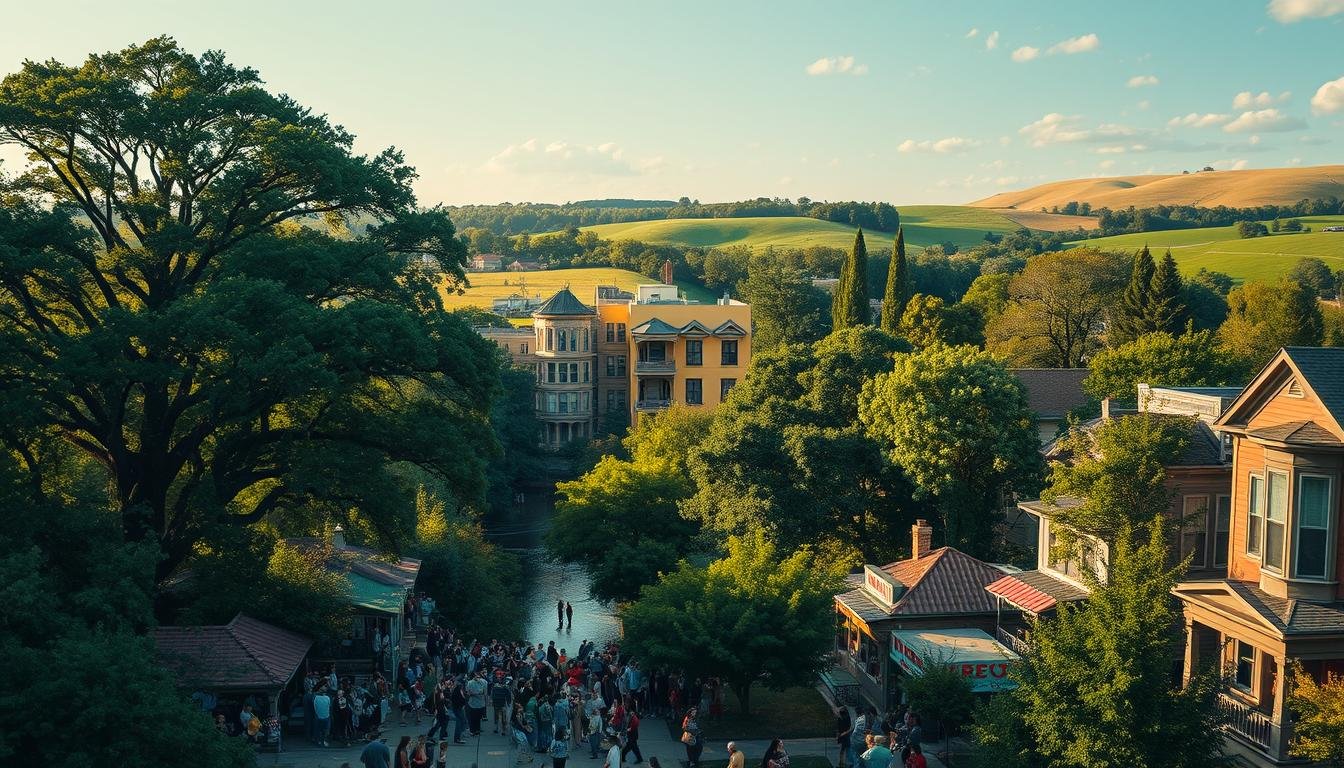This case study examines how highway construction erased a thriving cultural and economic corridor and reshaped a community.
About sixty years ago, the I-375 freeway carved through black bottom and paradise valley, displacing families and uprooting businesses. The report traces how those policy choices fractured neighborhood life and severed economic ties that took decades to build.
Today planners propose converting the depressed freeway into a street-level boulevard, with construction planned for 2026–2028 and an estimated cost near $425 million, backed by nearly $105 million in federal support. Detroit Future City urges reparative investments to address harms and rebuild wealth for affected black detroiters. For more background on these policy and funding shifts, see a detailed report on recent planning and history here.
Key Takeaways
- The I-375 project stands as a clear example of how freeway construction reshaped a historic neighborhood.
- Construction years ago displaced residents and dismantled local economies in black bottom and paradise valley.
- Current plans aim to reconnect the area with a boulevard, funded in part by federal grants.
- Advocates call for targeted reparative investments to restore opportunity for black detroiters.
- This case links past displacement with present policy choices and measurable redevelopment goals.
Roots Of Black Bottom And Paradise Valley: Culture, Commerce, And Community
Hastings Street and St. Antoine formed the spine of a thriving commercial corridor that linked homes, clubs, and shops. Hastings Street, in particular, wove venues and storefronts into a continuous street life that drew visitors from across the region.
Joe Louis embodied neighborhood pride: raised on Catherine Street in black bottom and later operating an office along St. Antoine in paradise valley, he connected sport, celebrity, and local enterprise. Clubs such as B&C Beer Garden and Club 666 fostered a nightlife that featured top performers and kept the area vibrant.
Hastings Street And St. Antoine: The Spine Of A Black Business District
The corridors supported nearly 350 Black-owned businesses, from boutique hotels and supper clubs to small groceries and repair shops. Those businesses created jobs and sustained everyday life for many residents.
Clubs, Culture, And Icons: From Joe Louis To Duke Ellington
Legendary artists—Duke Ellington, Billie Holiday, Count Basie, and Miles Davis—played local venues. John Lee Hooker sang at Henry’s Swing Bar and recorded classic tracks that sprang from this scene.
Entrepreneurship And Everyday Life: An Estimated 350 Black-Owned Businesses
The area blended residential blocks in black bottom with the commercial sweep of paradise valley along Brush, Beaubien, St. Antoine, Hastings, and East Adams. That mix of uses reinforced social networks and a resilient community identity.
For a detailed historical account, see remembering black bottom and paradise valley.
From Urban Renewal To Freeways: Policies That Erased A Neighborhood
Mid-century planning decisions set in motion a chain of clearances that stripped entire neighborhoods of homes and shops. Officials framed these moves as modernization after unrest, but the outcomes displaced renters and erased street life.

The Detroit Plan, Housing Commission Actions, And The Push To Condemn Black Bottom
Developer Eugene Greenhut’s $50 million Detroit Plan in the 1940s found backing under Mayor Jeffries. In January 1946 the housing commission asked the Common Council to condemn the area, and the commission moved later that year.
By 1950 Mayor Albert Cobo had ordered large clearances. That legal path prioritized land acquisition and wholesale clearance rather than rehabilitation.
Lafayette Park And The Chrysler Freeway/I-375: Replacing Homes And Killing Hastings Street
Lafayette Park rose with Mies van der Rohe townhouses and the Pavilion Luxury Apartments, which broke ground in October 1956. These projects changed tenure and demographics: by 1970 roughly three-quarters of residents were white.
Construction of the I-375 segment of the Chrysler Freeway began in 1959 and effectively destroyed Hastings Street, the vital artery that connected commerce and community.
| Year | Action | Impact |
|---|---|---|
| 1940s | Detroit Plan proposed | Policy agenda for large-scale clearance |
| 1946 | Housing Commission condemnation | Land acquisition and displacement begin |
| 1956–1959 | Lafayette Park & I-375 construction | Homes razed; Hastings Street dismantled |
| 1974 | Press critique | The Free Press called it “urban renewal’s first fiasco.” |
“Urban renewal’s first fiasco.”
- Housing commission authority enabled rapid condemnation and sale of land.
- Federal and local plans linked freeway expansion with redevelopment goals.
- Replacement housing favored new models that displaced working renters.
For a focused review of transportation impacts and policy choices, read the detailed impact report that traces these decisions and their long-term effects.
Detroit Paradise Valley Black Business District Lost To Urban Renewal Freeways
Clearing land for large-scale roadwork disrupted a dense web of enterprises, homes, and everyday life. The construction removed anchors that had supported steady commerce and family housing for decades.
Displacement severed social ties and undermined housing stability for many black detroiters and black residents. When shops closed and leases ended, daily routines and informal safety nets dissolved.

Displacement, Lost Generational Wealth, And The Long Shadow On Black Detroiters
Land dispossession and business closures erased equity and customer bases. Owners who had planned succession lost inventory, property interest, and the chance to pass enterprises to heirs.
Detroit Future City calls for reparative investments to rebuild wealth and access to land and capital. Anika Goss notes that many had intended to hand businesses down; that pathway was cut off by clearance and road construction.
- Displaced people entered fragmented markets with fewer anchors, making reestablishment harder.
- Credit access and property ownership opportunities declined, shrinking long-term development prospects.
- Cultural losses—venues, street life, and trusted networks—created lasting harm to community life.
“Reparative investments must acknowledge harm and rebuild wealth for those affected.”
For a deeper historical account of people and places in black bottom, see this useful overview: people and places – Black Bottom.
Present-Day Reckoning And Redesign: Boulevard Conversion And Reparative Investments
The upcoming boulevard conversion sets a clear timeline and raises urgent questions about who benefits from redevelopment.

Converting I-375 To A Boulevard: Timeline, Cost, And Community Concerns
The construction phase is slated for 2026–2028 with an estimated cost near $425 million. A federal grant of about $105 million helps finance the project.
MDOT and the city engage residents on bridge, planter, historic marker, and public art design choices. Critics worry surface traffic could reduce pedestrian safety and mostly aid wealthier landowners.
Detroit Future City’s Vision: Reparative Investments And Wealth Building
Detroit Future City proposes targeted reparative investments that prioritize black detroiters for ownership, business support, and housing repair.
The plan outlines an investment fund combining private equity, venture capital, philanthropy, corporate, and public contributions. It draws lessons from St. Paul’s Rondo to pair transportation design with equitable development and new housing pathways.
Reviving The Spirit: Paradise Valley Cultural & Entertainment District And Hastings Place
The 2016 DDA plan and recent development activity aim to catalyze culture-forward growth near the corridor.
Hastings Place is a mixed-use anchor: 60 apartments, a five-story parking deck, retail, and offices for the Michigan Chronicle. The project seeks to spur local development while honoring neighborhood legacy.
| Topic | Data | Implication |
|---|---|---|
| Timeline | 2026–2028 | Construction staging must protect existing businesses |
| Funding | $425M total; $105M federal | Mixed financing requires transparent governance |
| Design Elements | Bridges, planters, art, markers | Community input shapes pedestrian safety outcomes |
| Accountability Metrics | Housing units, contracts to Black firms, safety data | Tracks equitable distribution of benefits |
“Reparative investments must acknowledge harm and rebuild wealth for those affected.”
Accountability will depend on clear metrics: affordable housing production, share of contracts to Black-owned firms, small business tenancy, pedestrian safety, and access to capital.
Conclusion
The sequence of official plans, the housing commission condemnation, Lafayette Park and later chrysler freeway construction reshaped land and everyday life. This arc shows how urban renewal and road work replaced thriving streets and small enterprises.
Repairing harm means centering residents, funding targeted housing and apartments, and tracking measurable benefits: affordable housing, small-business retention, and safe mobility. Accountability must tie design choices and phased construction to clear outcomes.
Coordinated cultural and economic strategies can restore community life. For historical context, see the Black Bottom neighborhood history and work on capturing Black Bottom.
With transparent governance, inclusive design, and reparative investments, honoring the legacy of black bottom and paradise valley can guide redevelopment that restores dignity and opportunity for black detroit residents.
